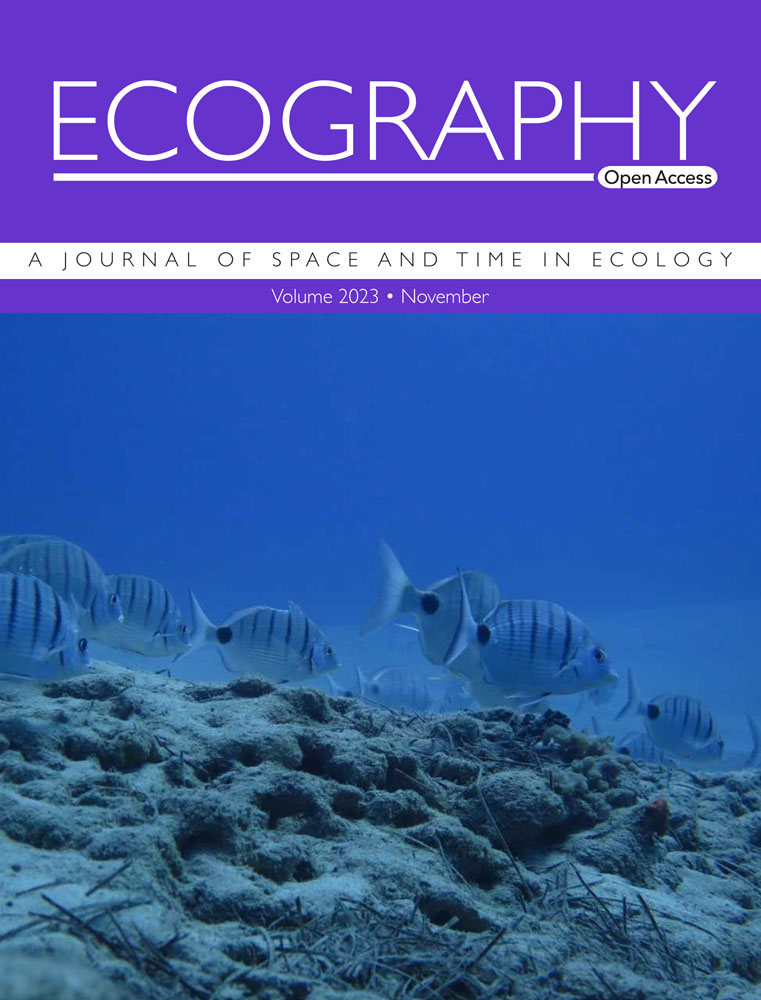Functional and phylogenetic convergence of winter and breeding bird communities in the northeastern US
IF 5.4
1区 环境科学与生态学
Q1 BIODIVERSITY CONSERVATION
引用次数: 0
Abstract
Around the world, ecological communities are becoming more similar to one another in a process known as biotic homogenization – an increase in similarity among communities over time. While biotic homogenization has been widely studied among spatial communities, very little attention has been paid to beta diversity between seasonal communities, especially in terms of functional or phylogenetic diversity. In temperate ecosystems, seasonality plays a major role in structuring ecological communities, but anthropogenic pressures are altering community composition. We analyze 40 years of data to study changes in beta diversity between winter and breeding bird communities in the northeastern US. We find evidence of taxonomic, phylogenetic, and functional homogenization between winter and breeding bird communities driven by decreasing turnover. Changes in phylogenetic diversity largely mirrored changes in taxonomic diversity, but functional diversity did not, with functional richness increasing in both seasons despite species richness increasing only in winter. Functional homogenization was driven by 1) decreasing occurrence of winter boreal finches and breeding season aerial insectivores, which reduced the functional space unique to either season, and 2) increasing occurrence of raptors, mergansers, wild turkey, and other functionally distinct species, which expanded the total functional space of both seasons and the shared functional space between seasons. Together, these shifts demonstrate a decline in the distinctiveness of functional space between seasons. Our study is one of the first to describe functional and phylogenetic homogenization between seasons and highlights the importance of considering seasonal homogenization and of using multiple facets of diversity to describe and understand biotic homogenization.美国东北部冬季和繁殖鸟类群落的功能和系统发育趋同
在世界各地,生态群落在一个被称为生物同质化的过程中变得越来越相似——群落之间的相似性随着时间的推移而增加。虽然生物同质化在空间群落中得到了广泛的研究,但对季节群落之间的β多样性,特别是在功能或系统发育多样性方面的研究却很少。在温带生态系统中,季节性在生态群落结构中起主要作用,但人为压力正在改变群落组成。我们分析了40年的数据,研究了美国东北部冬季和繁殖鸟类群落之间β多样性的变化。我们发现了在更替减少的驱动下,冬季和繁殖期鸟类群落之间的分类、系统发育和功能同质化的证据。系统发育多样性的变化在很大程度上反映了分类学多样性的变化,而功能多样性的变化则没有,两个季节的功能丰富度都有所增加,而物种丰富度仅在冬季增加。功能同质化主要由以下因素驱动:1)冬季北方雀类和繁殖期空中食虫动物的减少,减少了各季节特有的功能空间;2)猛禽、秋沙鸭、野生火鸡等功能独特的物种的增加,扩大了两季节的总功能空间和季节间的共享功能空间。总之,这些变化表明了季节之间功能空间独特性的下降。我们的研究是第一个描述季节之间功能和系统发育同质化的研究之一,强调了考虑季节同质化和使用多样性的多个方面来描述和理解生物同质化的重要性。
本文章由计算机程序翻译,如有差异,请以英文原文为准。
求助全文
约1分钟内获得全文
求助全文
来源期刊

Ecography
环境科学-生态学
CiteScore
11.60
自引率
3.40%
发文量
122
审稿时长
8-16 weeks
期刊介绍:
ECOGRAPHY publishes exciting, novel, and important articles that significantly advance understanding of ecological or biodiversity patterns in space or time. Papers focusing on conservation or restoration are welcomed, provided they are anchored in ecological theory and convey a general message that goes beyond a single case study. We encourage papers that seek advancing the field through the development and testing of theory or methodology, or by proposing new tools for analysis or interpretation of ecological phenomena. Manuscripts are expected to address general principles in ecology, though they may do so using a specific model system if they adequately frame the problem relative to a generalized ecological question or problem.
Purely descriptive papers are considered only if breaking new ground and/or describing patterns seldom explored. Studies focused on a single species or single location are generally discouraged unless they make a significant contribution to advancing general theory or understanding of biodiversity patterns and processes. Manuscripts merely confirming or marginally extending results of previous work are unlikely to be considered in Ecography.
Papers are judged by virtue of their originality, appeal to general interest, and their contribution to new developments in studies of spatial and temporal ecological patterns. There are no biases with regard to taxon, biome, or biogeographical area.
 求助内容:
求助内容: 应助结果提醒方式:
应助结果提醒方式:


